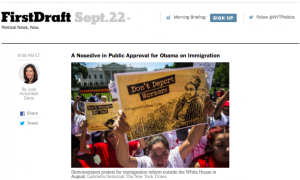
A few Times reporters have left the company to launch their own independent newsletters in recent months. Yes, but: Even if there's value for the readers, the booming newsletter market has meant that there isn't always the same level of value for writers. Hardiman added that she's confident in the Times' position because of the authority of its journalism, the scale of its distribution and the value of The Times' subscription bundle.Asked if this effort was created to compete with Substack and similar platforms, Hardiman said it's "a natural step for us that's fully in line with long term strategy.Hardiman noted that almost half of all Times subscribers open at least one newsletter on a given week.īe smart: The rise of independent publishing platforms like Substack has forced several newsrooms to experiment with more personality-driven content, mostly via newsletters and podcasts, as a way to drive subscribers.The more we can do to help people develop that rapport, the more they are likely are to pay and stay." "We really see that subscribers over-index with the idea of feeling a deep connection to expertise and journalists.But the company is putting more newsletters behind its paywall "to fill a different need," Hardiman said.Several newsletters, including some of the Times' most popular daily tip-sheets, like its Morning Newsletter by David Leonhardt and its DealBook business newsletter by Andrew Ross Sorkin, will remain free.The big picture: The Times has been in the newsletter business for 20 years, and currently publishes over 50 newsletters across an array of topics, reaching nearly 15 million people every week. Eight existing news emails will also be made only available to subscribers, including those about politics, tech, sports and wellness.Existing newsletters from Opinion columnists Jamelle Bouie, Paul Krugman and Frank Bruni will also only be made available to subscribers.Writers include Times tech opinion columnist Kara Swisher writer and sociologist Tressie McMillan Cottom and Jay Caspian Kang, previously a writer-at-large at the New York Times Magazine. Seven opinion newsletters will be introduced, said Kathleen Kingsbury, the Times' Opinion editor."It's also part of a greater investment the types of benefits it can offer to paid subscribers," Hardiman added, noting other subscriber-only benefits, like access to special events, and allowing subscribers to "gift" articles to friends.Īt least 18 new and existing newsletters will only be available to subscribers, beginning Aug.

Why it matters: "It's very much in line with our long-term strategy of creating journalism worth paying for," said Alex Hardiman, head of product at the Times. You can read it below.The New York Times is rolling out a slew of new, subscriber-only newsletters from news and opinion writers. Her essay is devastating but, in many ways, inspiring. Today’s Modern Love essay echoes that last line: “We are our best selves, even if it’s too late.” When Michelle Friedman learned that her estranged brother was dying, she decided to face old wounds and regrets, and be there for her brother in his final hours. We are our best selves, even if it’s too late. That’s what we do in the end: the messy, tender, heartbreaking things. Although blindsided by her fatal addiction, I was grateful for those final days in the hospital: feeding my sister, shuffling her to the bathroom, singing show tunes (her eyes always closed) and telling her I loved her. “You need to come home.” I had no idea that Jenny, a 44-year-old suburban mother, would be dead from prescription opioids just six days later.

“Your sister is in the hospital,” my mother said over the phone.

This week’s staggering Modern Love essay, “ A Last Act of Intimate Kindness,” reminded me of a powerful Tiny Love Story we published years ago, “ What We Do in the End”:


 0 kommentar(er)
0 kommentar(er)
